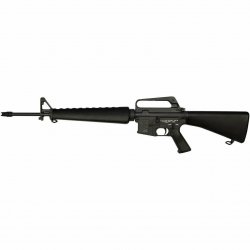Acorn
Operator
Wow, thanks for sharing TacticalPirate.And look at Colt in the 1960s selling that dreaded black rifle "assault weapon" as a sporting gun...
View attachment 18428
View attachment 18427
Those are super early SP1s. Note the open prong flash suppressors and small triangular cocking pieces. Early to mid 60s?

